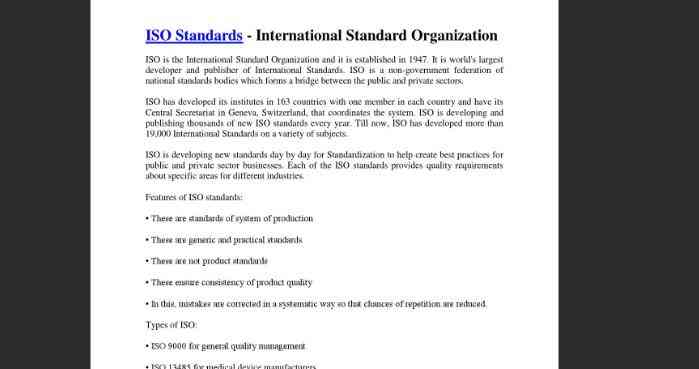|
International
Standard
ISO 11427
Third edition
Jewellery and precious
2024-04
metals — Determination of
silver — Potentiometry using
potassium bromide
Joaillerie, bijouterie et métaux précieux — Dosage de l’argent —
Méthode potentiométrique utilisant le bromure de potassium
Reference number
© ISO 2024
All rights reserved. Unless otherwise specified, or required in the context of its implementation, no part of this publication may
be reproduced or utilized otherwise in any form or by any means, electronic or mechanical, including photocopying, or posting on
the internet or an intranet, without prior written permission. Permission can be requested from either ISO at the address below
or ISO’s member body in the country of the requester.
ISO copyright office
CP 401 • Ch. de Blandonnet 8
CH-1214 Vernier, Geneva
Phone: +41 22 749 01 11
Email: [email protected]
Website: www.iso.org
Published in Switzerland
ii
Contents Page
Foreword .iv
1 Scope . 1
2 Normative references . 1
3 Terms and definitions . 1
4 Principle . 1
5 Reagents . 1
6 Apparatus . 2
7 Sampling . 2
8 Procedure . 2
8.1 Determination of potassium bromide solution factor .2
8.1.1 General .2
8.1.2 Preparation of silver standards .2
8.1.3 Titration of the standard silver solution .2
8.1.4 Calculation of the potassium bromide standard solution factor .3
8.2 Determination .3
8.2.1 Preparation of the sample solution .3
8.2.2 Elimination of palladium .3
8.2.3 Titration of the sample solution .3
9 Calculation and expression of results . 3
9.1 Calculation .3
9.2 Repeatability .4
10 Test report . 4
Bibliography . 5
iii
Foreword
ISO (the International Organization for Standardization) is a worldwide federation of national standards
bodies (ISO member bodies). The work of preparing International Standards is normally carried out through
ISO technical committees. Each member body interested in a subject for which a technical committee
has been established has the right to be represented on that committee. International organizations,
governmental and non-governmental, in liaison with ISO, also take part in the work. ISO collaborates closely
with the International Electrotechnical Commission (IEC) on all matters of electrotechnical standardization.
The procedures used to develop this document and those intended for its further maintenance are described
in the ISO/IEC Directives, Part 1. In particular, the different approval criteria needed for the different types
of ISO document should be noted. This document was drafted in accordance with the editorial rules of the
ISO/IEC Directives, Part 2 (see www.iso.org/directives).
ISO draws attention to the possibility that the implementation of this document may involve the use of (a)
patent(s). ISO takes no position concerning the evidence, validity or applicability of any claimed patent
rights in respect thereof. As of the date of publication of this document, ISO had not received notice of (a)
patent(s) which may be required to implement this document. However, implementers are cautioned that
this may not represent the latest information, which may be obtained from the patent database available at
www.iso.org/patents. ISO shall not be held responsible for identifying any or all such patent rights.
Any trade name used in this document is information given for the convenience of users and does not
constitute an endorsement.
For an explanation of the voluntary nature of standards, the meaning of ISO specific terms and expressions
related to conformity assessment, as well as information about ISO's adherence to the World Trade
Organization (WTO) principles in the Technical Barriers to Trade (TBT), see www.iso.org/iso/foreword.html.
This document was prepared by Technical Committee ISO/TC 174, Jewellery and precious metals, in
collaboration with the European Committee for Standardization (CEN) Technical Committee CEN/TC 410,
Consumer confidence and nomenclature in the diamond industry, in accordance with the Agreement on
technical cooperation between ISO and CEN (Vienna Agreement).
This third edition cancels and replaces the second edition (ISO 11427:2014) which has been technically
revised.
The main changes are as follows:
— deletion of “in silver alloys” in the title;
— change of the scope by extending it to alloys containing from 100 to 999 parts per thousand;
— addition of oxygen content for r
...














